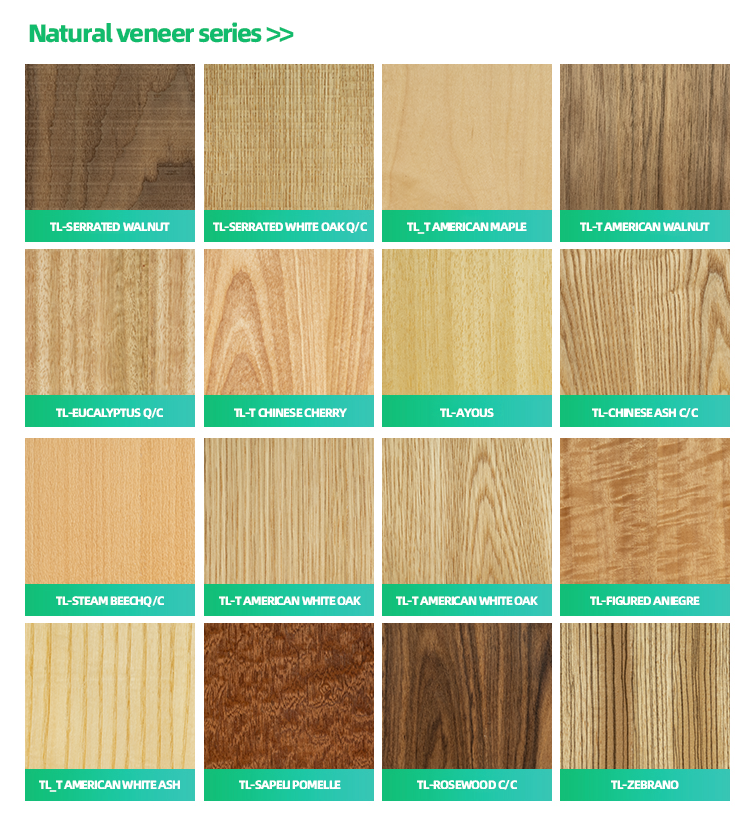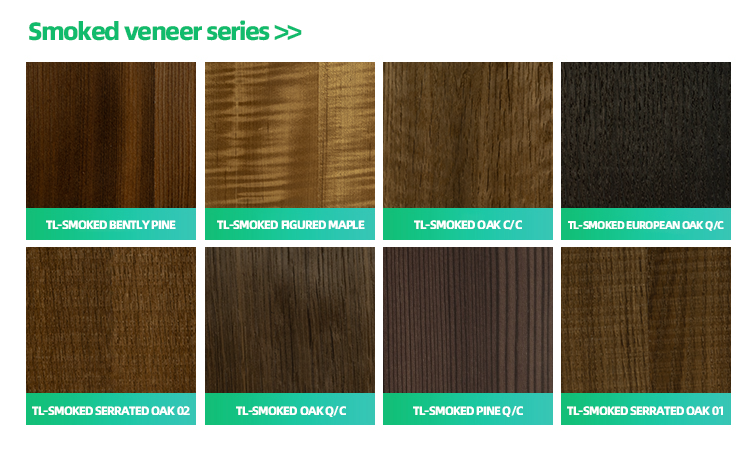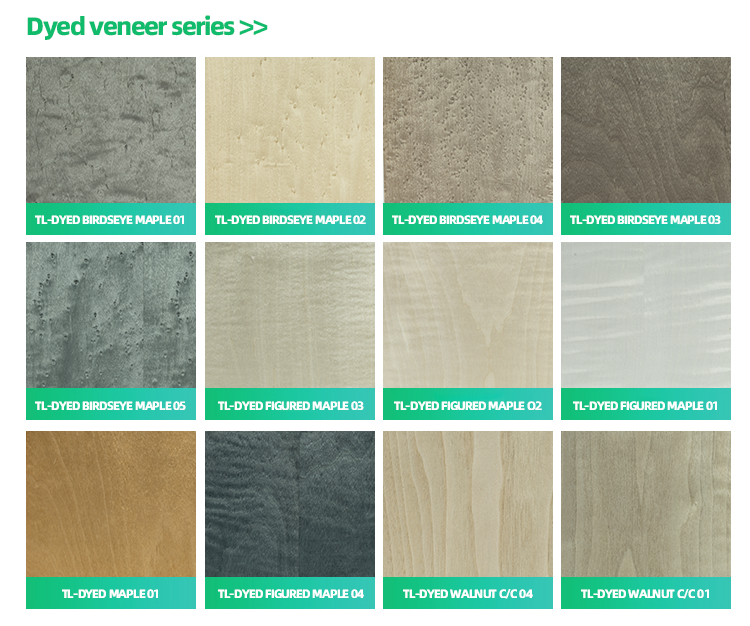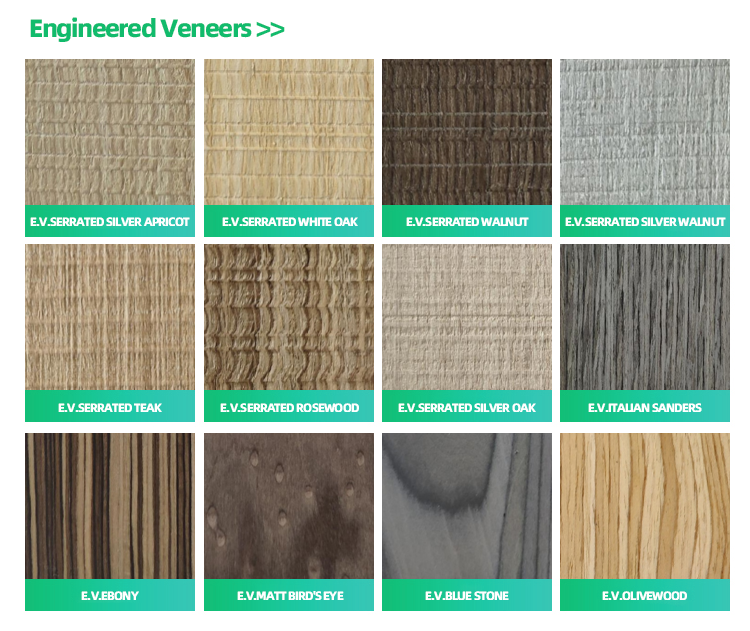Veneer is a fascinating material that has been used in the furniture and interior design industry for centuries. In this article, we will explore the world of veneer and delve into the different types that are available today. We'll discuss the production process, classification, and the advantages and disadvantages of four main types of veneer: natural wood veneer, smoked wood veneer, stained wood veneer, and engineered or technological veneer.
Natural Wood Veneer:
Natural wood veneer is created by slicing or peeling thin sheets from a solid wood log. The production process involves carefully selecting the wood species and then cutting it into veneer sheets. This type of veneer showcases the natural beauty of wood, including its unique grain patterns, color variations, and textures. Some advantages of natural wood veneer include its authenticity, warmth, and a rich, organic look. However, it can be more expensive and susceptible to warping and fading over time.

Smoked Wood Veneer:
Smoked wood veneer is known for its distinct, rich coloration achieved through a smoking process. Typically, this method involves exposing the wood to ammonia fumes, which alter the wood's color while preserving its natural characteristics. Smoked veneer offers a wide range of deep, earthy tones and enhances the wood's appearance. It's an excellent choice for adding warmth and character to interior design projects. One drawback is that it may not be suitable for all applications due to its strong coloration.

Dyed Wood Veneer:
Dyed wood veneer involves applying various types of dyes and stains to enhance the wood's appearance. This method allows for a wide spectrum of colors and finishes, making it a versatile choice for design projects. Stained veneer offers consistency in color and is less susceptible to fading, but it may not reveal the natural beauty of the wood grain as effectively as natural or smoked veneers.

Engineered or Technological Veneer:
Engineered veneer, often referred to as technological veneer, is a product of modern innovation. It is created by slicing or peeling thin layers from fast-growing trees and then using advanced techniques to replicate the appearance of various wood species. This type of veneer offers consistent quality, cost-effectiveness, and a wide range of design possibilities. It is also more environmentally friendly than natural wood veneer as it reduces the demand on slow-growing hardwood trees. However, it lacks the genuine beauty and authenticity of natural wood.

Conclusion:
In the world of veneer, there is a type to suit every design preference and project requirement. Natural wood veneer captures the beauty of nature, while smoked veneer adds depth and character. Stained veneer provides versatility in color choices, and engineered veneer offers a sustainable and affordable alternative. When selecting veneer for your projects, it's essential to consider the intended use, budget, and desired aesthetic to make the right choice. Each type has its advantages and disadvantages, and the decision ultimately depends on the specific needs and preferences of the manufacturer or designer. Veneer, in its various forms, continues to play a vital role in the world of woodworking and design, offering endless possibilities for creative expression.
Post time: Oct-13-2023







